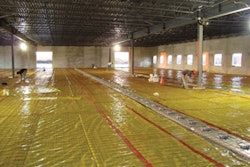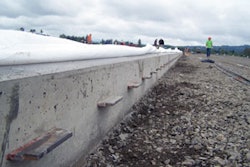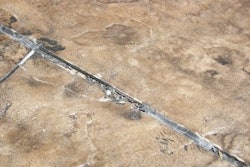
The $1 billion Federal City complex is taking shape.
And there's no alternative: The federal government requires that Marines occupy the 29-acre compound in Algiers by Sept. 15, 2011.
That means construction must be completed by June 2011. To meet that deadline, builders are constructing the anchor Marine Forces Reserve building, or MarForRes, using a century-old method called "tilt-up."
Tilt-up is conceptually simple but technically complicated. It involves casting and erecting concrete walls on site, as opposed to shipping them in from an outside factory.
"It's the most economical method of delivery," said Ed Sauter, executive director of the Iowa-based Tilt-Up Concrete Association. "You don't have the overhead factor. You don't have transportation cost. "
Tilt-up has shaved about three months of construction and up to 10 percent of costs for the 411,000-square-foot MarForRes, according to estimates by David Mize, president and CEO of the New Orleans Federal Alliance. But builders throughout the country have been slow to embrace the technique, which was first used in the early 1900s, according to the association.
Casting concrete is precision science, and erring by a few inches "is not an easy thing to fix," Sauter said. That's an imposing risk for the construction industry, which Sauter said is one of the "slowest to adopt new ideas. "
"If you have problems you haven't foreseen, who will pay for your learning experience?" Sauter said.
But Federal City, along with similar projects, is helping to advance tilt-up. Woodward Design+Build is forming 196 panels on a concrete casting bed for the outer shell of MarForRes. A crane is erecting the panels, which weigh more than 130,000 pounds each and measure up to 72 feet tall. MarForRes' walls are now about 75 percent complete.
"The conventional method of building, you'd come in and build the structural skeleton first," Woodward Vice President Steve Lawson said. "Then you'd have a brick and block crew on the outside, scaffold the building, and build it up, brick by brick and block by block."
About 700 million square feet of tilt-up wall now exists in the United States, roughly double the amount in 1997, when the association began tracking, Sauter said. And the method is creating a new industry, with firms specializing in products for lifting, bracing and chemical treatment. Six such firms existed when the association was founded in 1986, Sauter said. More than 50 are in business today.
Woodward is also embedding half-inch-thick bricks for the MarForRes walls, giving the appearance of exposed brick in certain sections of the panels. It's an aesthetic touch that is part the evolution of tilt-up, Lawson said.
"I've done a lot of tilt-up, but nothing this fancy," he said.
Federal City may be among the fanciest of tilt-up projects, but it's not the tallest. The Tilt-Up Concrete Association Web site features projects with walls approaching 100 feet, and that threshold seems well within reach.
Tilt-up is not the only time-oriented innovation Woodward is using to meet its deadline for Federal City. The firm is building MarForRes walls at the same time it designs the inside, which Mize said is saving another two months.
"You've got to figure out how to mesh it together. It's a little bit of a challenge, and it's a little bit of a risk," Mize said. "But it saves you all kinds of time if you can do it. "•


















